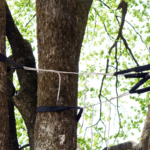Secret Language of Trees: Fun Facts
The secret language of trees may sound like a whimsical concept from a fairy tale, but it’s a real and fascinating aspect of nature. Trees have a way of communicating with each other, and their complex interactions are vital to the environment. This blog post unveils the mysteries of the secret language of trees, offering an insightful look into how trees connect with each other and the world around them.
The Science of Tree Communication
Believe it or not, trees have their own ways of talking to each other. They use a combination of chemical signals, fungal networks, and even electrical impulses to share information. Here’s how it works:
- Chemical Signals: When a tree is attacked by pests, it releases specific chemicals into the air. These chemicals can be detected by neighboring trees, alerting them to the danger and triggering defensive responses.
- Fungal Networks: Trees are often connected underground by a network of fungi known as mycorrhizal fungi. These networks facilitate the exchange of nutrients and information between trees, creating a collaborative community.
- Electrical Impulses: Some research suggests that trees can send electrical signals through their branches, transmitting important messages about their health and well-being.
The Benefits of Tree Communication
Understanding the secret language of trees isn’t just a fascinating intellectual pursuit; it has practical applications too. By learning how trees communicate, we can develop strategies to protect forests and promote ecological balance. The benefits include:
- Pest Control: By mimicking the chemical signals that trees use, we can develop natural pest control methods.
- Forest Management: Understanding the connections between trees helps in managing forests sustainably, ensuring their health and longevity.
- Climate Change Mitigation: Trees play a vital role in capturing carbon dioxide, and understanding their interactions can inform strategies to combat climate change.
Fun Facts About Tree Communication
- Some trees can recognize their offspring and share nutrients with them preferentially.
- Trees can “talk” to specific species, sending targeted messages.
- The oldest known living tree is over 4,800 years old and has undoubtedly been part of many tree “conversations” over the millennia.
Conclusion
The secret language of trees is an enchanting and scientifically rich subject. By exploring the ways trees interact and communicate, we gain insights into a hidden world that impacts everything from our environment to our understanding of life itself. While the secret language of trees may be mysterious, the more we learn, the more we realize how interconnected we are with the natural world.
Additional Resources:


